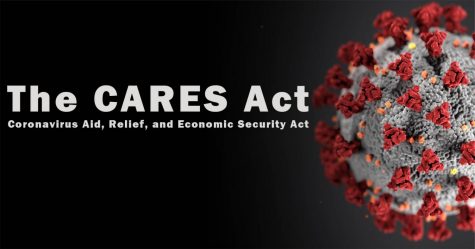Busting myths about the COVID-19 pandemic
The novel coronavirus strain COVID-19 has catastrophically reshaped daily life.
From self-imposed social distancing to the large scale postponement and cancelation of large gatherings like religious services and sporting events, these sudden responses to the ongoing pandemic are the perfect breeding ground for misinformation and myths to spread. The World Health Organization (WHO) has published a list of myths about COVID-19 and the truth that debunks them. Here are some of those myths.
Transmission
From what the WHO has observed so far, COVID-19 is spread through contact with respiratory droplets (fluid from coughing and sneezing) from infected people. It can be transmitted through hot and humid environments as well as cold and snowy conditions. There has been no evidence to show that COVID-19 dies in cold temperatures. It is also not transmitted through mosquito bites.
The first known cases of COVID-19 occurred in Wuhan, China in December 2019 and have since spread around the world. The first known cases in Michigan occured in an adult female in Oakland County and an adult male in Wayne County and there have been 53 discovered cases as of writing. Data regarding testing and known cases can be found on the Michigan coronavirus website.
Infection prevention
The best known way to prevent contracting COVID-19 is to regularly wash your hands with alcohol-based soap and water, disinfect your hands with alcohol-based hand sanitizer, maintain a distance of three feet from infected people and avoid touching your face, eyes and mouth. Hand dryers, ultraviolet (UV) light, hot baths, pneumonia vaccines, rinsing your nose with saline solutions, eating garlic, antibiotics (which only fight bacteria, not viruses) and spraying alcohol all over your body will not prevent getting infected with COVID-19. Wearing a mask will also not help with preventing an infection and should only be used by people with COVID-19 and people treating those with COVID-19.
Symptoms
The main symptoms for COVID-19 are fever, tiredness and dry cough. Some patients may also have aches and pains, nasal congestion, runny nose, sore throat or diarrhea.
The Centers for Disease Control and Prevention (CDC) also have what they call emergency warning signs that include, but are not limited to, difficulty breathing or shortness of breath, persistent pain or pressure in the chest, new confusion or inability to arouse and bluish lips or face. If you have any of the emergency warning signs, seek medical help immediately.
How to get tested
To inquire about getting tested for COVID-19, please contact your healthcare provider. In Michigan, healthcare providers will determine whether a test is needed based on symptoms, travel history and how much of a risk COVID-19 poses to a patient. NBC reports a COVID-19 hotline has been set up at 1-888-535-6136 that is open seven days a week from 8 a.m. to 5 p.m. To test for COVID-19, CNN reports that doctors examine a swab from the throat since the virus affects the respiratory system. Those with a “wet” cough may be asked to cough up sputum (mix of saliva and mucus) for testing. Tests are similar to those done for the flu.
What to do if infected
If you end up catching COVID-19, you can also help prevent the spread of COVID-19 through covering your mouth and face with your arm or a tissue when you sneeze and cough, wearing a mask and quarantining yourself. 80% of cases do not need special treatment or hospitalization, but anyone showing the CDC’s emergency warning signs should seek immediate medical attention.
Is there a vaccine/treatment/cure?
The WHO says that no treatment or preventative medicine currently exists for COVID-19. While clinical trials for a potential vaccine began on Monday in Washington state and several other tests are being planned, the only solution is to quarantine and let the virus run its course.





